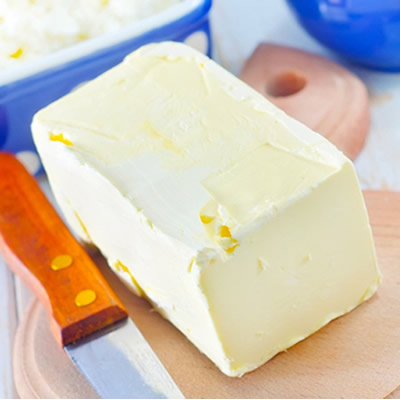Nutrition
Pros: Like all dietary fats, saturated fat provides calories and helps the body absorb certain vitamins, cushions and insulates the body, and supports many bodily processes.
Cons: Saturated fat raises the levels of total cholesterol and low-density lipoprotein (LDL or “bad”) cholesterol in the blood – which in turn can increase the risk of developing cardiovascular disease.
Function
Saturated fat, as a type of fat, has several functions in baking. It contributes tenderness, moistness, and a smooth mouthfeel to finished products, and serves as a flavor-enhancer of blended ingredients while contributing its own distinct flavor.1
Fat provides an appealing visual aspect, delivering a moist, creamy, fluffy, or shiny element to products.1 Fat blends with low saturated fat can be used in pastry to lower saturated fat levels.2
FDA regulation
The Dietary Guidelines for Americans recommends consuming less than 10% of calories per day from saturated fat by replacing saturated fat with monounsaturated and polyunsaturated fats, while staying within recommended limits for calories and total dietary fat.3
References
- Bakerpedia. “Fat | Baking Ingredients.” bakerpedia.com/ingredients/fat/. Accessed 26 August 2017.
- Garcia-Macias, P., et al. “Performance of Palm-based Fat Blends with a Low Saturated Fat Content in Puff Pastry.” European Journal of Lipid Science and Technology, vol. 113, no. 12, Feb. 2011, pp. 1474–1480, doi:10.1002/ejlt.201100075.
- US Food and Drug Administration. “Saturated fat.” Accessdata.fda.gov, www.accessdata.fda.gov/scripts/InteractiveNutritionFactsLabel/saturated-fat.html. Accessed 26 August 2017.

